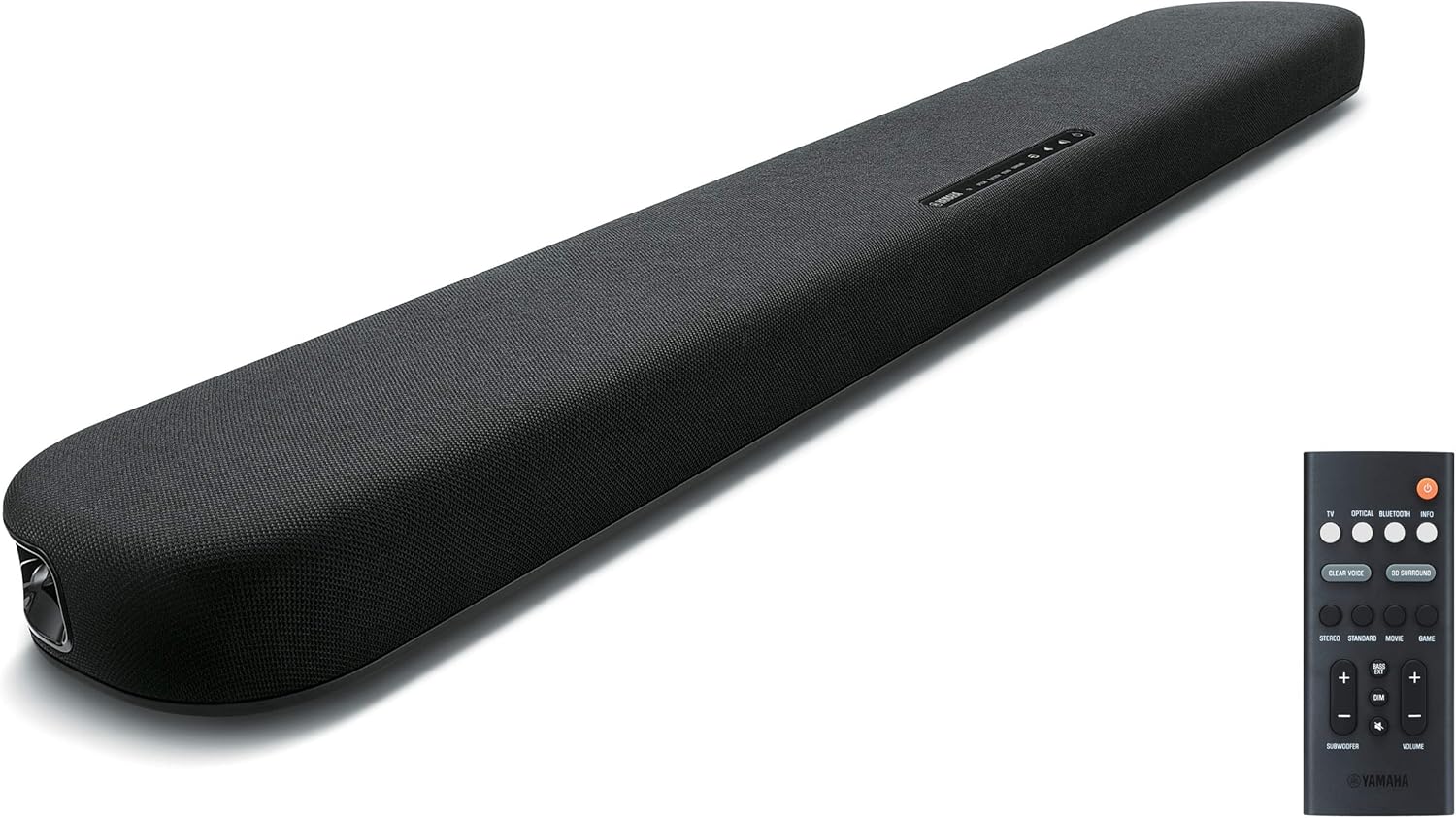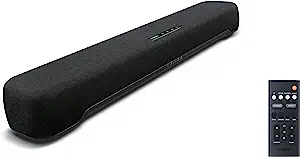Products are selected by our editors, we may earn commission from links on this page.
Introduction to Sound Bar Placement
Importance of Proper Sound Bar Placement
Proper sound bar placement is crucial for optimizing audio performance in your living room. The placement can significantly affect how the sound is perceived and enjoyed. One important consideration is the distance between the sound bar and the TV. Ideally, the sound bar should be placed directly below or above the TV to create a cohesive audio-visual experience. This positioning helps to synchronize the sound with the on-screen action, enhancing immersion. Additionally, avoiding obstructions such as furniture or decor items in front of the sound bar ensures that the audio waves are not obstructed, resulting in clearer and more accurate sound reproduction. Proper placement also takes into account the room acoustics, considering factors like wall reflections and room size to achieve the best sound quality possible.
Factors to Consider Before Placement
Before deciding on the placement of your sound bar, there are several factors to consider. First, think about the size and layout of your living room. Larger rooms may require a more powerful sound bar or the addition of satellite speakers for optimal audio distribution. Next, consider the wall or surface where you plan to mount or place the sound bar. Ensure that it is sturdy enough to support the weight of the sound bar and that it is at an appropriate height for comfortable viewing and listening. Additionally, take into account the room’s furnishings and decor. Avoid placing the sound bar in a cluttered or crowded area where sound may be absorbed or distorted. Lastly, consider the connectivity options of your sound bar and ensure that it can be easily connected to your TV or other devices without any signal loss or interference.
Ideal Placement Options for a Sound Bar for TV

Wall-Mounted Placement
When it comes to optimizing audio performance in your living room, wall-mounted placement of a sound bar can make a significant difference. Mounting the sound bar directly beneath your TV not only creates a sleek and streamlined look but also ensures that the sound is projected at the optimal height and angle for an immersive experience.
Wall-mounting your sound bar also helps to free up space on your TV stand or entertainment center, giving you more flexibility in arranging your living room furniture. However, it’s essential to consider a few factors before mounting. Ensure that the wall is sturdy enough to support the weight of the sound bar, and use appropriate mounting brackets for a secure installation.
TV Stand Placement
If wall-mounted placement isn’t suitable for your living room setup, placing the sound bar on your TV stand is another popular option. When positioning the sound bar on the TV stand, it’s crucial to consider the placement in relation to your TV. Ideally, the sound bar should be centered beneath the TV screen to ensure optimal audio projection.
To maximize audio performance, make sure the sound bar isn’t obstructed by any objects or furniture on the TV stand. Avoid placing it too close to the edge of the stand, as this can cause vibrations and affect the sound quality. Additionally, consider using a sound bar with a built-in subwoofer or a separate wireless subwoofer to enhance the bass response and create a more immersive audio experience.
Placement Tips for Various Room Layouts
Small Living Rooms
In small living rooms, optimizing audio performance can be a challenge due to limited space. However, a soundbar can be a great solution. Its compact size allows for easy placement without sacrificing sound quality. When positioning the soundbar, it is important to place it directly in front of the TV, either mounted on the wall or placed on a stand. This ensures that the sound is projected towards the viewers, creating a more immersive experience. Additionally, consider utilizing a soundbar with wireless connectivity, such as the Yamaha Audio Compact Sound Bar with Wireless Subwoofer and Bluetooth (ASIN: B0BBSBJV9W). Its small size, virtual 3D surround sound, and Bluetooth streaming capabilities make it an ideal choice for small living rooms.
Large Living Rooms
In large living rooms, soundbar placement becomes crucial to ensure optimal audio performance. When dealing with a larger space, it is recommended to position the soundbar closer to the seating area, preferably centered with the TV. This helps to create a more balanced sound distribution throughout the room. Additionally, consider using a soundbar with a wireless subwoofer, such as the Yamaha Soundbar (ASIN: B07T5GGR8L). Its wireless connectivity allows for flexibility in placement, while the powerful subwoofer adds depth and richness to the audio. Whether mounted on the wall or placed on a media console, this soundbar is sure to deliver an immersive sound experience in large living rooms.
Addressing Acoustic Challenges: Finding the Perfect Sound Bar for TV

Echoes and Reverberations
When it comes to optimizing audio performance in your living room, one important factor to consider is the issue of echoes and reverberations. These can greatly impact the clarity and quality of sound produced by your soundbar for TV. To minimize echoes, it is recommended to place acoustic panels on the walls or use rugs and curtains to absorb sound waves. Positioning your soundbar at ear level, either mounted on the wall or placed on a TV stand, can also help reduce echoes and deliver a more immersive audio experience. Additionally, choosing a soundbar with advanced sound processing technology, such as the Yamaha Soundbar with DTS Virtual:X, can further enhance the audio by creating a virtual 3D surround sound effect, minimizing echoes, and providing a more realistic soundstage.
Noise Reflection from Walls and Surfaces
Another factor to consider for optimal audio performance is the reflection of noise from walls and surfaces in your living room. Hard surfaces like glass, tile, or hardwood floors can cause sound waves to bounce off and create unwanted reflections, leading to an uneven listening experience. Placing sound-absorbing materials, such as acoustic panels or bookshelves with books, can help reduce these reflections and improve sound clarity. Additionally, positioning your soundbar away from walls or using a soundbar with built-in wall-mounting capabilities can further minimize the impact of noise reflections. The Yamaha Soundbar, with its wireless connectivity and versatility in placement options, offers a suitable solution to combat noise reflections and deliver optimal audio performance in your living room.
Additional Tips for Sound Bar Placement
Distance from the Listener
When it comes to optimizing the audio performance of your sound bar for TV, the distance from the listener plays a crucial role. Ideally, the sound bar should be placed at a distance that allows for an immersive listening experience without any distortion.
To achieve the best results, consider placing the sound bar at ear level when you are seated in your usual viewing position. This ensures that the sound waves reach your ears directly, enhancing the clarity and overall quality of the audio.
Additionally, it is important to maintain a proper distance between the sound bar and the TV. Placing the sound bar directly below or above the TV can create a more cohesive audio-visual experience, as the sound appears to be coming from the screen itself.
Surround Sound Placement Considerations
If you are looking to create a surround sound experience with your sound bar for TV, careful placement is essential. While sound bars are designed to provide a virtual surround sound effect, proper positioning can enhance this feature even further.
Consider placing the sound bar centrally in front of your viewing area. This allows for an equal distribution of sound to create an immersive surround sound experience. Some sound bars also come with rear speakers that should be placed behind you to complete the surround sound setup.
To ensure optimal performance, avoid placing any objects or furniture that may obstruct the sound waves. It is also recommended to keep the sound bar away from walls or corners, as this can cause audio reflections and diminish the surround sound effect.
By considering the distance from the listener and the placement for surround sound, you can maximize the performance of your sound bar for TV and elevate your overall viewing experience.
Troubleshooting and Fine-Tuning Your Sound Bar for TV

Common Sound Bar Placement Mistakes
When it comes to setting up a sound bar for your TV, many people make some common mistakes that can negatively impact the audio performance. One of the most frequent errors is placing the sound bar too far away from the TV. This can lead to a disconnection between the audio and visuals, affecting the overall viewing experience. To avoid this, ensure that the sound bar is positioned directly beneath or above the TV, creating a cohesive soundstage.
Another mistake to avoid is obstructing the sound bar with objects such as decorative items or furniture. These obstructions can block the sound waves and result in muffled or distorted audio. It is crucial to keep the area around the sound bar clear, allowing the sound to propagate freely and deliver an immersive experience.
Fine-Tuning Audio Settings for Optimal Performance
Once you have correctly placed your sound bar for your TV, it’s time to fine-tune the audio settings for the best performance. Start by adjusting the sound bar’s equalizer settings to match your preferences. Whether you prefer a bass-heavy sound or a more balanced audio, these settings can enhance the overall sound quality to suit your liking.
Additionally, explore the various sound modes that your sound bar offers. These modes can optimize the audio for specific scenarios, such as movie watching or gaming. Experiment with different modes to find the one that delivers the most immersive experience for your favorite activities.
Lastly, don’t forget to consider room acoustics. If your living room has hard surfaces that cause sound reflections, consider adding acoustic panels or rugs to dampen the echoes and improve audio clarity. This simple adjustment can make a significant difference in the overall sound quality produced by your sound bar for TV.




